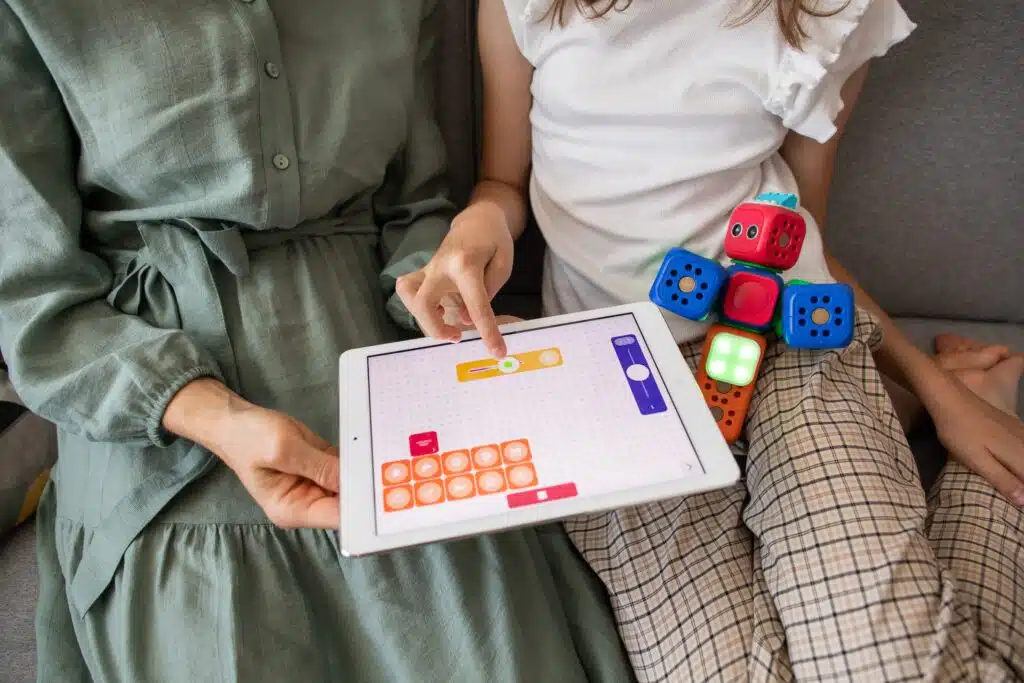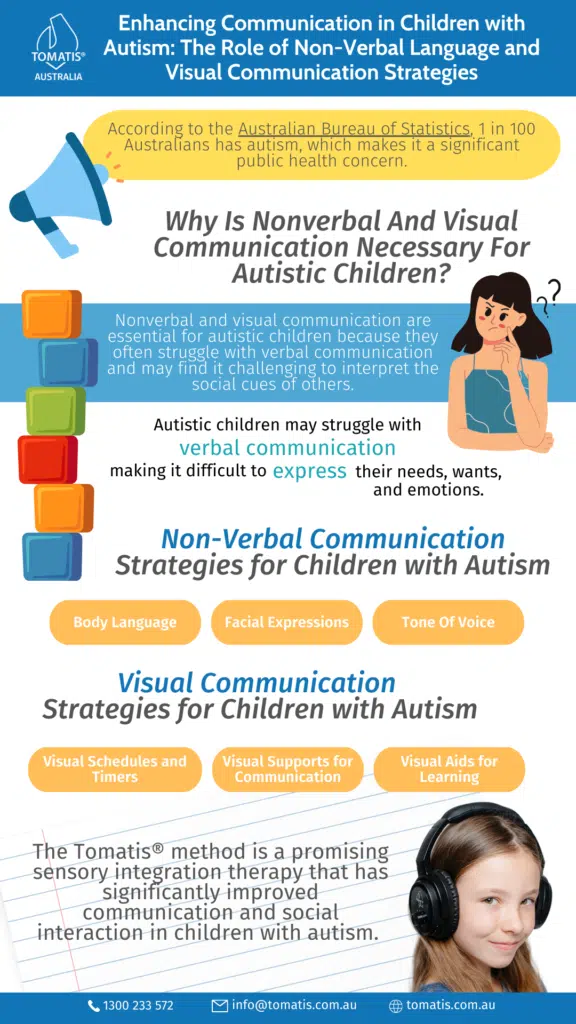According to the Australian Bureau of Statistics, 1 in 100 Australians has autism, which makes it a significant public health concern. Communication difficulties are one of the hallmark symptoms of autism, and non-verbal language and visual communication strategies effectively enhance communication in children with autism. This article will discuss the role of non-verbal language and visual communication strategies in communication for children with autism.
Why Is Nonverbal And Visual Communication Necessary For Autistic Children?
Nonverbal and visual communication are essential for autistic children because they often struggle with verbal communication and may find it challenging to interpret the social cues of others.
Autistic children may struggle with verbal communication, making it difficult to express their needs, wants, and emotions. In some cases, they may be nonverbal and rely on other forms of communication to express themselves. Nonverbal communication, such as gestures, body language, facial expressions, and tone of voice, can help autistic children to understand and express emotions. Albert Mehrabian conducted a study called the 7-38-55% communication rule, which showed that up to 90% of communication is non-verbal, that is, body language or tone of voice.
Visual communication is also critical for autistic children. Visual aids can help autistic children to understand concepts and situations that may be difficult to communicate verbally. For example, the child can use a picture of a toilet to indicate he needs to use the bathroom, making it easier for them to understand than to communicate the same message verbally.
Nonverbal and visual communication can also help autistic children to understand social situations better. Autistic children often struggle with social cues and may find it challenging to interpret body language and facial expressions. Using visual aids such as social stories, autistic children can learn how to respond appropriately to social situations.
Therefore, nonverbal and visual communication are necessary for autistic children because they can help with verbal communication, understanding and expressing emotions, and interpreting social cues. It is essential to use these forms of communication in an empathetic and patient manner to create an environment where autistic children feel safe and supported.







